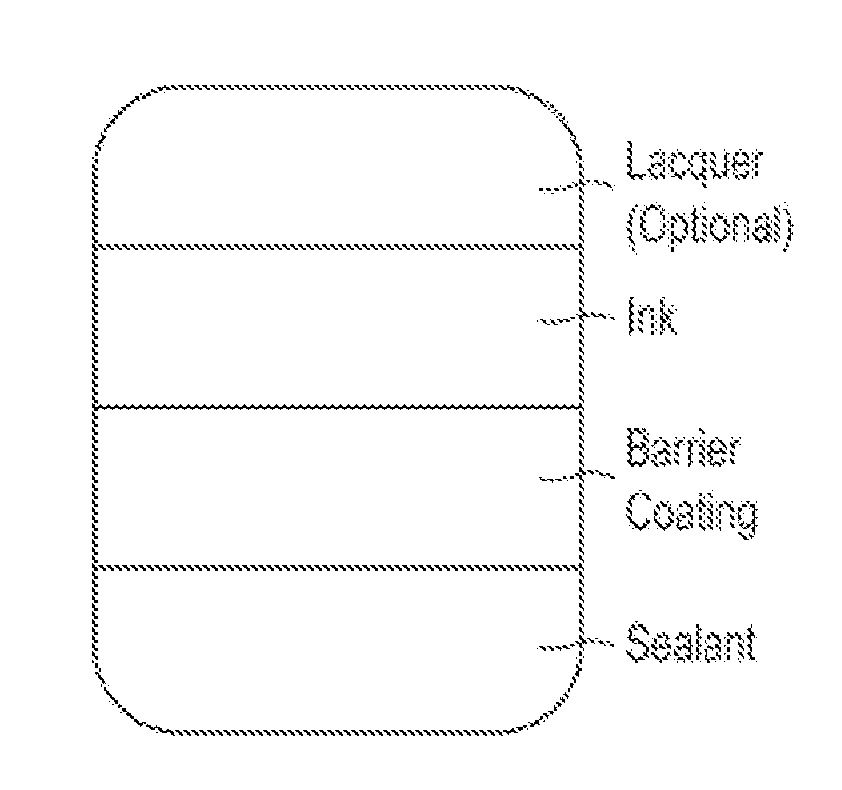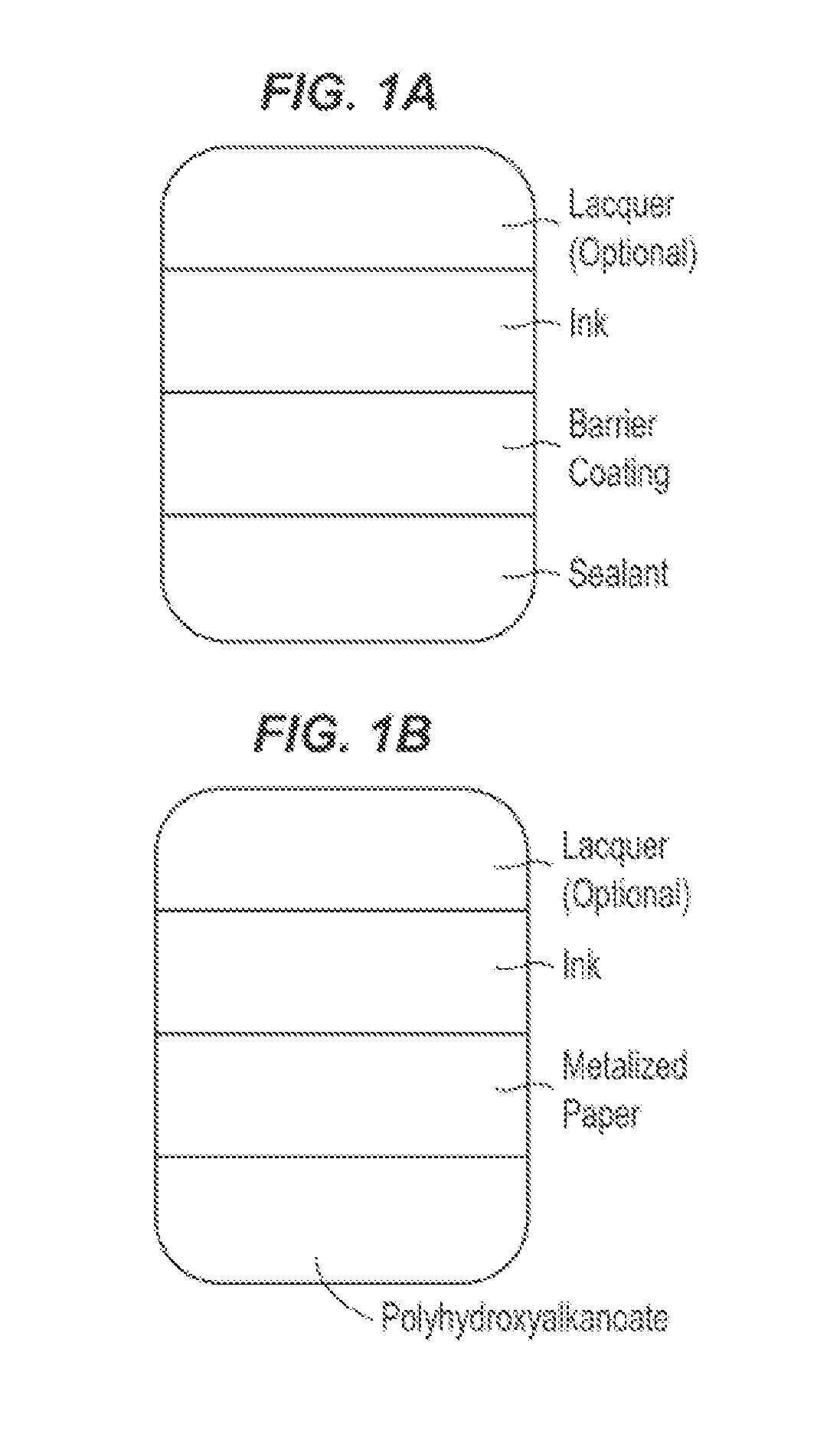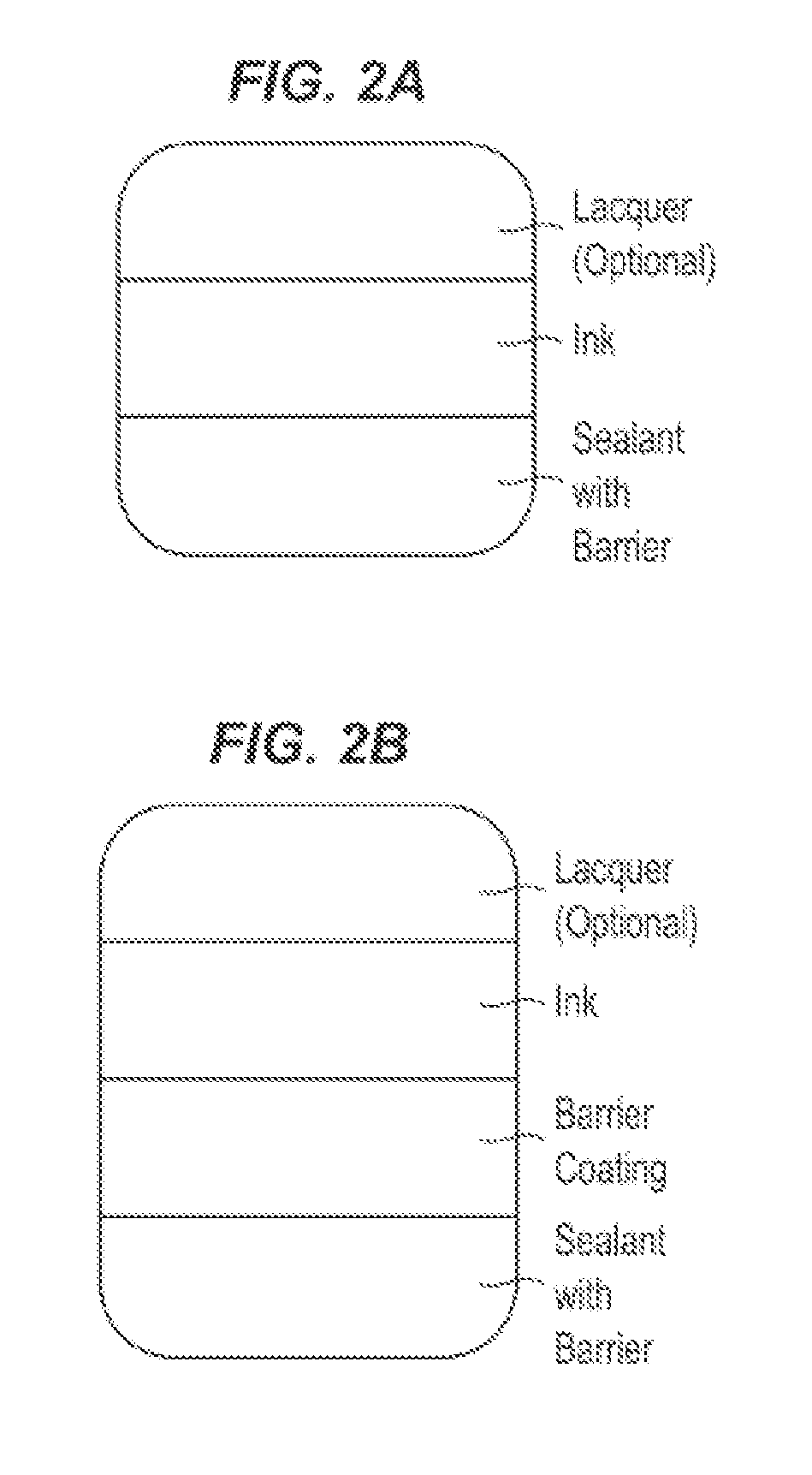Degradable Sachets for Developing Markets
- Summary
- Abstract
- Description
- Claims
- Application Information
AI Technical Summary
Benefits of technology
Problems solved by technology
Method used
Image
Examples
Embodiment Construction
[0032]It has now been found that biodegradable sachets can be produced that withstand the manufacturing process, have a long shelf life, and when discarded into the open environment, disintegrate within a short time period into pieces small enough to fit through a 1 mm sieve after first and continuous exposure to water and sealant-degrading microorganisms. The sachets of the invention advantageously do not require industrial composting conditions for degradation. Further, they are composed of a single layer substrate with a coating and do not require costly, multiple lamination steps of different layers of materials. The relatively long shelf life of the sachets of the invention allow them to be stored or transported for a long period of time without a decrease in the physical and chemical integrity of the sachet, even when they contain liquid consumer products. The relatively fast biodegradation of the sachets results in a significant decrease in environmental litter. The films use...
PUM
| Property | Measurement | Unit |
|---|---|---|
| Length | aaaaa | aaaaa |
| Length | aaaaa | aaaaa |
| Length | aaaaa | aaaaa |
Abstract
Description
Claims
Application Information
 Login to View More
Login to View More - R&D
- Intellectual Property
- Life Sciences
- Materials
- Tech Scout
- Unparalleled Data Quality
- Higher Quality Content
- 60% Fewer Hallucinations
Browse by: Latest US Patents, China's latest patents, Technical Efficacy Thesaurus, Application Domain, Technology Topic, Popular Technical Reports.
© 2025 PatSnap. All rights reserved.Legal|Privacy policy|Modern Slavery Act Transparency Statement|Sitemap|About US| Contact US: help@patsnap.com



